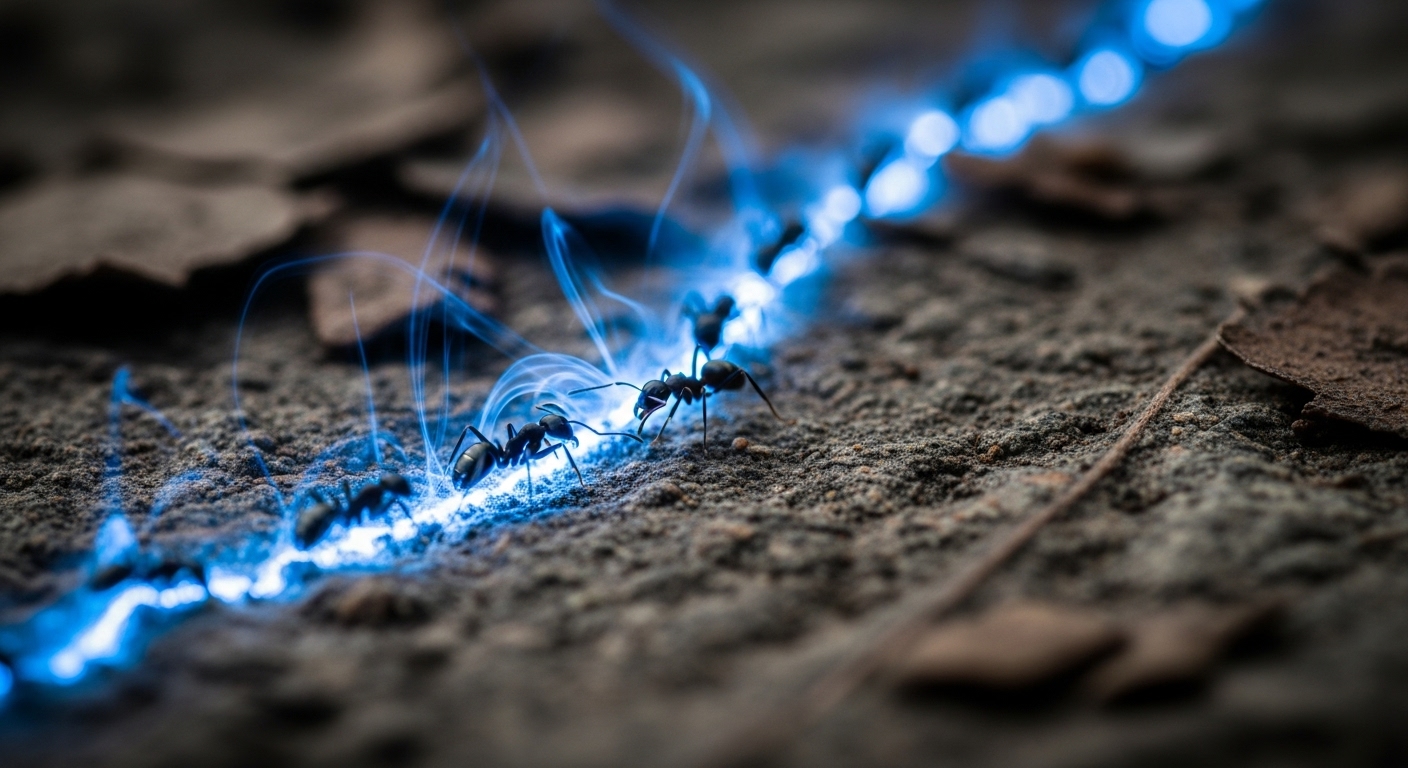Abstract: Trail pheromones represent one of the most efficient forms of chemical communication in the animal kingdom, particularly among social insects like ants. These volatile compounds, typically secreted from exocrine glands, act as chemical highways, recruiting nestmates to new food sources or guiding the colony’s movements. This article reviews the mechanism of trail laying, the chemistry of these signals, and their sophisticated interaction with other navigational cues, demonstrating the critical role of pheromones in ant social organization.
The Mechanism of Trail Laying and Detection
Ants are central place foragers who rely on a robust system to communicate the location of transient resources. When a worker ant finds a profitable food source, it returns to the nest, actively depositing a trail pheromone along the route (Wilson, 1963). The specific gland used for this secretion varies by species, but is commonly located in the posterior abdomen, with the pheromone flowing down the sting (Wilson, 1963).
Nestmates encountering this chemical signal detect it via highly sensitive chemoreceptors located in their antennae. The concentration of the pheromone provides critical information: a strong trail indicates a rich or highly exploited food source, leading to greater recruitment and faster travel times for the followers (Czaczkes et al., 2013). This mechanism creates a positive feedback loop, where successful foragers reinforce the trail, increasing its attractiveness to others.
Trail Pheromones vs. Memory and Context
While pheromones are crucial for initial recruitment and navigation on complex routes, the foraging system is not solely dependent on chemical signals. Research on species like Lasius niger demonstrates a sophisticated interplay between chemical information and individual memory (Czaczkes et al., 2013). Experienced foragers, for instance, often prioritize their own learned route memory over the trail pheromone when the route is simple. However, the presence of the pheromone on complex, bifurcating routes significantly reduces navigation errors and helps in acquiring route memory more quickly (Czaczkes et al., 2013).
Furthermore, ants utilize negative feedback mechanisms to regulate trail deposition. Experienced ants often deposit less pheromone on a heavily marked, successful trail, which may serve to conserve the chemical resource or prevent over-recruitment to a potentially depleting food source (Czaczkes et al., 2012).
Chemical and Industrial Significance
Trail pheromones are typically short-lived, volatile molecules to ensure that trails to depleted food sources fade quickly. The specific chemical components are species-specific, a factor that is exploited in integrated pest management. The synthetic creation of trail pheromones is utilized in baits and traps to selectively lure pest ant species, demonstrating the powerful and reliable behavioral control exerted by these chemical cues in a real-world, multi-billion dollar context (Vander Meer, 1996; Rust et al., 2004).
References
Czaczkes, T. J., et al. (2012). Uncovering the complexity of ant foraging trails. *Current Opinion in Neurobiology*, 22(2), 297–302.
Czaczkes, T. J., et al. (2013). Ant foraging on complex trails: route learning and the role of trail pheromones in *Lasius niger*. *Journal of Experimental Biology*, 216(2), 188–194.
Rust, M. K., et al. (2004). Management of Exterminating Pests. In: *Encyclopedia of Entomology*. Springer, Dordrecht. [Contextual reference for pest management use]
Vander Meer, R. K. (1996). Trail Pheromones in Pest Control. In: *Pheromone Communication in Social Insects: Ants, Wasps, Bees, and Termites*. Westview Press. [Contextual reference for pest management use]
Wilson, E. O. (1963). The social biology of ants. *Annual Review of Entomology*, 8(1), 345–368.


Leave a Reply